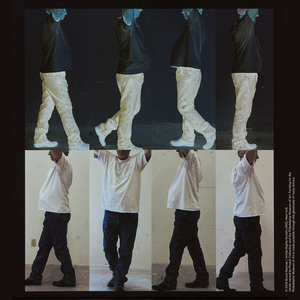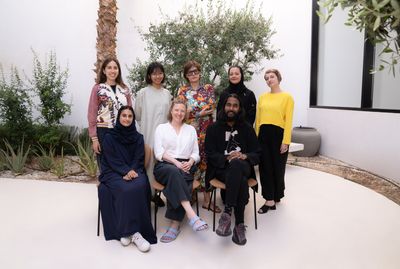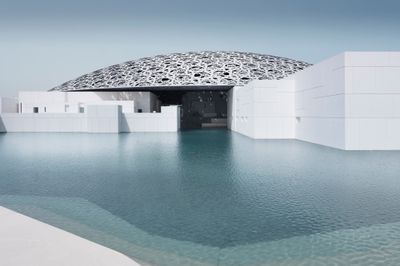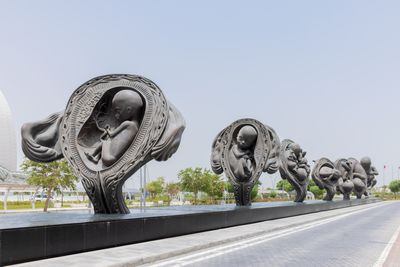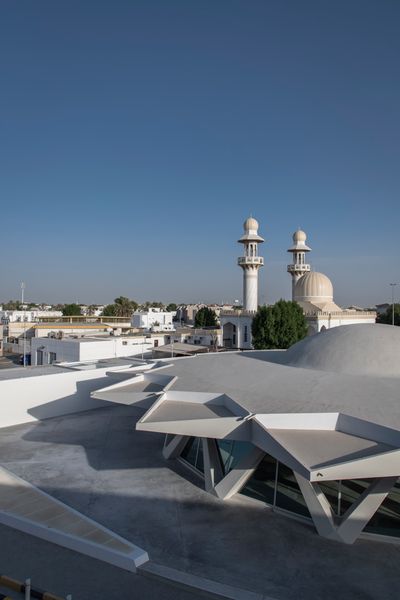Is Oil States’ Pivot Towards Art and Culture Succeeding?
As supply dwindles and the climate warms, oil states have promised to diversify away from fossil fuels. Building the cultural economy is part of their plan, with Saudi Arabia alone aiming to open more than 200 cultural attractions by 2030. Is it working?
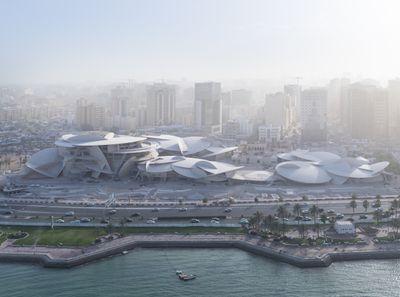
Aerial view of the National Museum of Qatar, designed by Ateliers Jean Nouvel. Photo: Iwan Baan.
'Phasing down fossil fuels is inevitable and it is essential—it's going to happen,' promised Sultan Ahmed Al Jaber, CEO of the Abu Dhabi National Oil Company, in an interview with The Guardian last month.
With the spigot of oil money supposedly being closed, the United Arab Emirates (U.A.E.), Saudi Arabia, and Qatar are among the countries seeking to diversify their economies, in part by developing their arts and culture industries. To that end, Saudi Arabia aims to open more than 200 cultural attractions by 2030.
A large-scale museum by Centre Pompidou is set to open in Saudi's AlUla desert complex and archaeological site in 2028 or 2029. That same site will also feature Wadi AlFann (Valley of the Arts), showcasing public art installations by artists such as Ahmed Mater and James Turrell in 2024.
Saudi launched its first-ever art biennale, the Diriyah Contemporary Art Biennale, in 2021, which will return under the art direction of Ute Meta Bauer from 20 February 2024. The Diriyah Biennale Foundation (DBF) also produces the world's first Islamic Arts Biennale, which launched in January 2023.
According to Aya al-Bakree, CEO of DBF, over 600,000 visitors saw the Islamic Arts Biennale, free of charge, over a four-month period. That's right up there with the number of ticketed visitors to the 59th Venice Biennale's International Exhibition (800,000) and documenta 15 (738,000).
Qatar, meanwhile, has announced plans to build several new museums as part of its 25-year plan to improve cultural infrastructure in the country.
Sheikha Reem al-Thani, Acting Deputy CEO of Exhibitions and Marketing and the Director of Centralised Exhibitions at Qatar Museums, explained that Qatar began its latest cultural infrastructure push by developing museums focused on heritage and culture, and then expanded into sports and technology. New art museums are coming next.
The Art Mill Museum, an international museum of modern and contemporary art, is slated to open in a former flour mill in 2030, while the Lusail Museum will exhibit works from the Qatar Museum's Orientalist collection from 2029.
The U.A.E. has begun to see the fruits of its Saadiyat Island development, which was drawn up by American architecture firm Gensler in 2004. The Louvre Abu Dhabi opened in 2017 and by 2019 it had attracted over 2 million visitors, making it the most visited museum in the Arab world. (For comparison, almost 8 million people visited the Louvre in Paris last year alone.) The Guggenheim Abu Dhabi, designed by Frank Gehry, will open on Saadiyat Island in 2025.
In April, the U.A.E. launched the Dubai Creative Economy Strategy, aiming to double the number of creative businesses operating in the country by 2025. The Emirates also intends to build a national art collection by sourcing loans from private collectors.
Despite new strategies and the splurge of spending on art museums, arts and culture initiatives will play a negligible role in weaning Gulf economies off oil.
As of 2021, arts and culture made up just 1.7% and 2.6% of GDP in Saudi Arabia and U.A.E. respectively, as reported by the World Bank. Saudi Arabia's Vision 2030 plan would see the cultural sector bring in U.S. $20 billion, or almost 3% of GDP. By comparison, the oil and gas sector made up 42% of Saudi GDP, or $288.5 billion, in 2021. (In the U.A.E., oil and gas makes up less than 20% of GDP, while in Qatar it's more than half.)
For now, it is difficult to see spending on art and culture as a pivot away from the fossil fuel industry when the two are so obviously entwined.
On 13 September, for example, The King Abdulaziz Centre for World Culture (Ithra) in Dhahran will launch an exhibition entitled Net Zero, a contemporary art exhibition that responds to global environmental challenges. Ithra, who also run the U.S. $500,000 Ithra Prize, is backed by Aramco, the world's largest corporate greenhouse gas emitter.
By another metric, though—art's ability to critique power structures and speak up for the marginalised—there is room for optimism.
Ocula Magazine's Global Editor-at-Large, Stephanie Bailey, wrote admiringly of Sharjah Biennial 15 this year, describing the exhibition as 'subversive'. She said the inclusion of works depicting drug use and same-sex relationships demonstrated a 'willingness to carefully test the lines of acceptability in the U.A.E.'
At the Diriyah Biennale, she noted 'significant, if incremental, strides' made by the inclusion of works that depicted matrilineal family trees and moments of queer intimacy.
(Such freedoms can't be taken for granted—Turkish curator Defne Ayas was selected to organise the next Istanbul Biennial only to be rejected this month, ostensibly for political reasons.)
While we can expect art world 'software' to lag behind the 'hardware' of rapid museumification, as happened in China during the 2000s and 2010s, art industry leaders in the Middle East that Ocula Magazine spoke to were optimistic that artists and curators would make good use of the opportunities provided by new museums and biennials.
Sabih Ahmed, Associate Director and Curator at the Ishara Art Foundation, a nonprofit in Dubai, said investment in art infrastructure by countries in the Gulf Cooperation Council (GCC) means the younger generation does not have to go to the West to see great art, or pursue a career in the arts.
It finally allows for 'a polyphony of centres rather than the age-old centre-periphery model for culture,' he said.
'I hope that alongside investments in museum-building and the art market, there will also be support for artist-run spaces, artist studios and ateliers, and magazines and publications, which are very important to the biodiversity that all arts require,' he added.
Antonia Carver is the British-born director of the Jeddah and Dubai-based nonprofit Art Jameel. She said that, 'if people choose not to engage with art from the GCC then they are missing out on getting to know bold, innovative cultural practitioners from a great breadth of backgrounds, positions.'
'This is a time of cultural change, especially in Saudi and the U.A.E., with more and more efforts to promote and support a diverse range of creative expression, and a greater imperative to allocate resources to sustain our cultural landscape for years to come,' she said. —[O]

